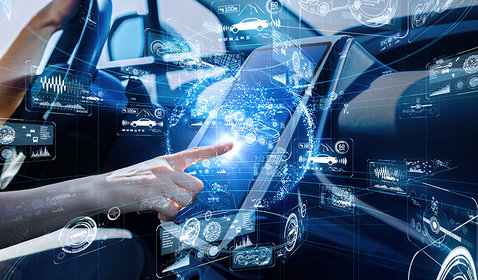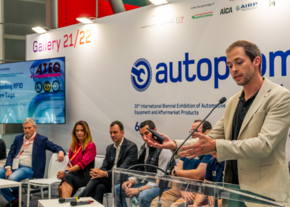
30/03/2021
Software, Connectivity, Big data and Cloud: the new key words in the automotive industry
Simonluca Pini - Contributor Editor at Il Sole 24 Ore
A relentless technological evolution is driving the sector toward a complex industrial scenario characterized by seamless connections between users, vehicles and the surrounding world
The transition towards an electric future is transforming the automobile as well as the entire automotive industry. If in the past, mechanical components were crucial, today the focus has clearly shifted on such things as software, connectivity, big data and cloud. Cars are bound to take the centre stage in a complex industrial scenario characterized by seamless connections between users, vehicles and the surrounding world. Software will play an increasingly important role in future vehicles. New trends such as electro-mobility, autonomous driving and modern mobility services would not be possible without it. This will also require more frequent updates and upgrades in the future. However, strict safety requirements throughout the life of the vehicle make wireless software upgrades and digital car services rather complex. Furthermore, the wide range of vehicles available, make things even more challenging.
Automotive software systems are booming: ten years ago, a car ran on about 10 million lines of software codes. Today software packages with advanced infotainment, electrified engines (hybrid or full electric) and Adas systems need 100 million lines and future autonomous vehicles may require between 300 and 500 million lines. To make a comparison, the operating systems of a PC or a smartphone have between 20 and 50 million. Such numbers shed light on why car manufacturers are sinking piles of cash in divisions dedicated to software and connected services, from big data to full Cloud integration. Data exchange in connected cities, also called Smart Cities, will increase significantly between road users (from pedestrian and cyclist to motorist), infrastructures and commercial activities. Thanks to the settings chosen, it may be possible to find our favourite restaurant based on user reviews or the best price on a specific product. This trend will likely spread to all product sectors, including the automotive industry, given the possibility of "informing drivers" about offers on dedicated services. The use of connected cars will increasingly allow motorists to identify the best route to avoid traffic jams or unscheduled road works. In addition, cars equipped with Car to X communication protocol will automatically "talk" to each other, sending out warnings on situations of danger or other potential obstacles along the road.
All this will contribute to the creation of "big data" able to provide statistical models on dangers or on how to better manage traffic flows. We must not forget the advantage this represents for electric mobility, where technology is fundamental to indicate which charging points to use along the route knowing in real time the available charge. Connected cars are becoming increasingly popular with drivers, as reported by Deloitte's Global Automotive Consumer Study 2021, but the focus on safety remains high. Here, too, electronic software will play a central role in managing driver assistance systems moving on to Level 3 assisted driving on the Sae chart, at least when regulations will allows it.
Automotive software systems are booming: ten years ago, a car ran on about 10 million lines of software codes. Today software packages with advanced infotainment, electrified engines (hybrid or full electric) and Adas systems need 100 million lines and future autonomous vehicles may require between 300 and 500 million lines. To make a comparison, the operating systems of a PC or a smartphone have between 20 and 50 million. Such numbers shed light on why car manufacturers are sinking piles of cash in divisions dedicated to software and connected services, from big data to full Cloud integration. Data exchange in connected cities, also called Smart Cities, will increase significantly between road users (from pedestrian and cyclist to motorist), infrastructures and commercial activities. Thanks to the settings chosen, it may be possible to find our favourite restaurant based on user reviews or the best price on a specific product. This trend will likely spread to all product sectors, including the automotive industry, given the possibility of "informing drivers" about offers on dedicated services. The use of connected cars will increasingly allow motorists to identify the best route to avoid traffic jams or unscheduled road works. In addition, cars equipped with Car to X communication protocol will automatically "talk" to each other, sending out warnings on situations of danger or other potential obstacles along the road.
All this will contribute to the creation of "big data" able to provide statistical models on dangers or on how to better manage traffic flows. We must not forget the advantage this represents for electric mobility, where technology is fundamental to indicate which charging points to use along the route knowing in real time the available charge. Connected cars are becoming increasingly popular with drivers, as reported by Deloitte's Global Automotive Consumer Study 2021, but the focus on safety remains high. Here, too, electronic software will play a central role in managing driver assistance systems moving on to Level 3 assisted driving on the Sae chart, at least when regulations will allows it.








